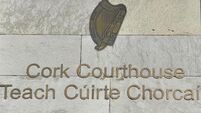Police may have used Columbine tactics
Police at many college campuses across the nation have trained in so-called “active shooter response” — aimed at quickly isolating attackers at often sprawling educational facilities.
“The first thing is to put the guy in a box,” said security analyst Kelly McCann. Quickly “isolate, contain and control” the threat while gathering as much intelligence on the attacker as possible, said McCann and other security experts.














